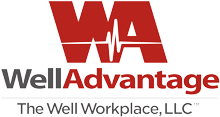The difference between aerobic and anaerobic activity is the presence of oxygen. Of course you are breathing during both activities. Aerobic exercise such as walking, biking or an aerobic exercise class, is often defined as any activity using the large muscle groups of the body for at least a 20 minute duration in the Target Heart Rate (THR) zone. The exercise is sustained by oxygen from the blood circulation through the body fueling the energy-producing activity of muscle fibers. Aerobic training is often called a cardio workout from the word cardiovascular. Its purpose is to strengthen the heart and lungs and help the body more efficiently use energy to perform a function such as walking. Activities such as snow shoveling and gardening can be aerobic in nature. The THR is found by subtracting your age from 220 and multiplying the result by 65% for the low end and 80% for the high end of your THR. For example, a 50 year old: 220-50 = 170; 170 x .65 = 110; 170 x .80 = 136. Therefore, the THR is 110 – 136 beats per minute.
Most training manuals recommend beginners and those people interested in weight loss to exercise at 60 – 70% of the THR as the body uses more fat for energy in that range and the body can sustain activity for a long period of time at that intensity level. Also, there is less chance of injury and exercise soreness. Weight loss requires burning more calories than you eat. Aerobic exercise burns fats and carbohydrates, but predominately fats, which is why it can help in weight loss. We want the body to use more fats as fuel as opposed to stored carbohydrates or proteins. Besides the THR method of determining intensity levels, you can use the talk test and the rate of perceived exertion (RPE). If you can maintain a short conversation while exercising, you are primarily aerobic and not under undue cardio respiratory stress. RPE is a 0-10 scale with 0-2 being very, very weak exercise effort, 3-5 moderate to strong effort, 6-10 very strong to maximal effort. The new government guidelines for healthy living issued in 2005 recommend a minimum of 30 minutes of aerobic exercise daily. If you have time you can exercise for 45-60 minutes or break it up into 15-20 minute segments. The important point is to do some aerobic activity daily.
The other type of activity is anaerobic which refers to short duration exercise requiring a burst of energy such as sprinting, weight lifting, martial arts, or running up a couple of flights of stairs. A different energy pathway system is used to fuel our muscles to perform anaerobic exercise. It is important for overall good health to include both aerobic and anaerobic activities in our daily lifestyle. Training with moderate weights 2 – 3 times per week would be beneficial to our bone health as well as adding strength and size to our muscles. As we age it is vital for our bones and muscles to perform some resistance training or we will lose lean muscle mass and weaken our bones and joints.
Sources:
The Book on Personal Training, Karl Dauphinais and James Bell, 2004.
Muscle Mechanics, Everett Aaberg, 1998.
Article by Bob McDowell, Certified Personal Trainer.
